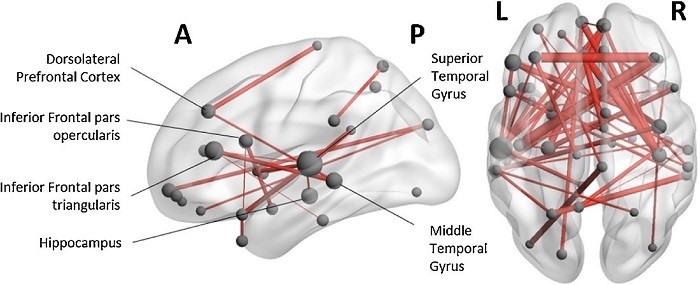Connections in the brain may be key to working memory performance in children
Summary:
A SickKids research team set out to investigate which brain regions connect with each other to hold information in memory for children. Their results could potentially lead to more specific therapies for those with cognitive difficulties.
If you’ve ever started a sentence but lost your train of thought or dialed a phone number only to forget the last two digits, that could be your working memory failing you. Working memory is responsible for temporarily holding information in mind that is immediately accessible for use. It is essential for learning and remembering things such as instructions, directions, phone numbers, etc. Difficulties in working memory are common in various developmental and neuropsychiatric disorders, such as attention deficit hyperactivity disorder (ADHD).
Julie Sato, PhD student, Department of Diagnostic Imaging at The Hospital for Sick Children (SickKids) and Dr. Margot Taylor, Director of Functional Neuroimaging, Diagnostic Imaging at SickKids set out to investigate which brain regions connect with each other to hold information in memory for children. Their results could potentially lead to more specific therapies for those with cognitive difficulties.
The research team looked at the interactions between brain regions in six-year old children while they completed a memory task in a magnetoencephalography (MEG) scanner. The task involved presenting two coloured squares to a child, asking them to remember the colours and then removing the squares from sight. Then two coloured squares were presented again and the child had to indicate if they were the same or different than the original coloured squares. In half the trials, the colour of one square changed.
Using an MEG scanner is an uncommon technique as there are only an estimated 150 MEG scanners worldwide; two of them residing at SickKids. The MEG scanner measures brain activity at the millisecond level, providing real-time information of where and when the brain activity is occurring.
There are three stages of working memory: encoding (a sample stimulus is presented), retention (a delay period when stimuli are being remembered) and recognition (presentation of a test stimulus, requiring participants to respond if the test stimulus matches the sample stimulus). By using the MEG, rather than traditional imaging techniques like functional magnetic resonance imaging (fMRI), the team was able to uncover the network of brain regions involved during distinct stages of working memory.
The researchers found that communication among specific brain regions increased when children successfully remembered information that was presented to them. When key regions in the frontal and temporal lobes were more highly connected with each other, children performed better on the memory task (see image below). They found that this increase in connectivity was confined to a brain wave called alpha, with a frequency between 8 and 14 Hz, which is known to be important in attention and memory processes in adults.
Interestingly, the regions of the brain responsible for language processing were also activated. This suggests that children may use verbal rehearsal strategies, such as repeating the colour of the squares to themselves silently, as a way to better recall and improve their performance.
Unlike adults who are able to maintain visual representations of stimuli in working memory and who engage visual brain regions during similar tasks, children seem to use different strategies and rely on different brain regions to support task performance.

Research on working memory has been done in adults, but little is known about how brain regions communicate with each other to support successful working memory in children. This study is the first to show that memory performance in children can be predicted based on the level of connectivity among brain regions in the alpha frequency band.
“Our findings demonstrate how different brain regions communicate with each other to form widespread networks that support memory performance in children,” says Sato. “Brain waves in the alpha frequency band were especially important in normal working memory functioning. Fewer connections among brain regions in the alpha band were shown to result in worse task performance, and may underlie working memory difficulties observed in various developmental disorders.”
The team looks forward to furthering their research by investigating how functional brain networks differ between children born preterm versus full-term. Children who are born 3 or 4 months premature are at a greater risk for impairments to working memory and other cognitive difficulties.
To learn more, read the full study published in Developmental Cognitive Neuroscience.
This work was supported by a grant from the Canadian Institutes of Health Research. It is an example of how SickKids is making Ontario Healthier, Wealthier and Smarter (www.healthierwealthiersmarter.com).

